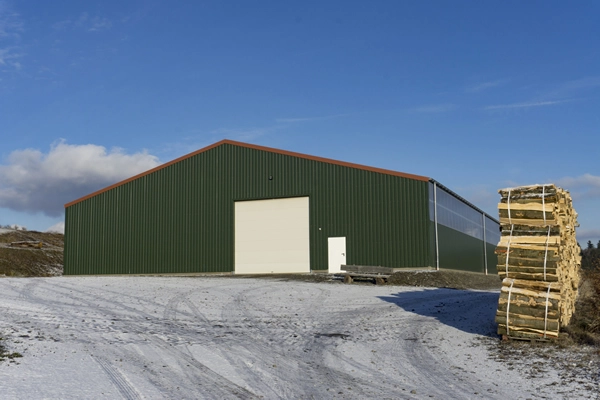
Post frame construction, often referred to as pole barn construction, has grown in popularity due to its versatility, cost-effectiveness, and durability. Originally used primarily for agricultural buildings, this construction method is now widely adopted for residential, commercial, and industrial applications. Understanding the fundamentals and benefits of post frame construction can help you decide if this building approach is right for your next project.
What is Post Frame Construction?
Post frame construction is a building technique that uses large, solid wood posts or laminated columns as the primary structural support. These posts are embedded deep into the ground or mounted on a concrete foundation, creating a stable framework. Horizontal framing members called girts are attached to the posts, and the exterior walls are often clad with materials like metal or wood siding. The roof is typically supported by trusses, which span the width of the building.
Key Benefits of Post Frame Construction
1. Cost-Effective: One of the most significant advantages of post frame construction is its cost efficiency. The use of fewer materials and simpler construction techniques reduces labor and material costs. Additionally, post frame buildings often require less time to construct, further lowering overall expenses.
2. Versatility: Post frame construction is highly adaptable to various building types and styles. Whether you need a barn, garage, workshop, commercial space, or even a home, this method can be customized to meet your specific needs. The open interior space allows for flexible floor plans and easy modifications.
3. Durability and Strength: The use of large, sturdy posts provides excellent structural integrity, making post frame buildings resistant to harsh weather conditions, including heavy snow loads and strong winds. The deep-set posts and solid framing ensure long-term durability and stability.
4. Energy Efficiency: Post frame buildings can be highly energy-efficient due to the wide spacing between posts, which allows for ample insulation. This results in better temperature regulation and reduced heating and cooling costs. Additionally, the design can easily accommodate energy-efficient windows and doors.
5. Quick Construction: The simplicity of post frame construction allows for faster build times compared to traditional stick-built methods. With fewer components and a straightforward assembly process, projects can be completed more rapidly, minimizing disruptions and delays.
Applications of Post Frame Construction
Agricultural Buildings: Originally designed for barns and storage sheds, post frame construction remains a popular choice for agricultural buildings such as a pole barn. Its ability to span large open spaces without interior supports makes it ideal for housing livestock, storing equipment, and protecting crops.
Commercial and Industrial Buildings: Post frame construction is well-suited for commercial and industrial applications, including warehouses, retail spaces, and manufacturing facilities. The open floor plan allows for efficient use of space and easy reconfiguration to accommodate changing business needs.
Residential Homes: Increasingly, homeowners are choosing post frame construction for its aesthetic appeal and functional benefits. Post frame homes offer spacious interiors, customizable designs, and energy efficiency, making them an attractive option for modern living.
Garages and Workshops: For personal or professional use, post frame construction provides an excellent solution for garages and workshops. The large, open interiors can accommodate vehicles, tools, and equipment, while the robust structure ensures long-term durability.
Considerations for Post Frame Construction
While post frame construction offers numerous advantages, there are some considerations to keep in mind:
Site Preparation: Proper site preparation is crucial for ensuring the stability and longevity of a post frame building. The ground must be level and well-drained to prevent issues with settling or moisture.
Building Codes and Permits: Ensure your project complies with local building codes and regulations. Obtaining the necessary permits and inspections is essential for legal and safety reasons.
Insulation and Finishing: While post frame buildings are energy-efficient, proper insulation and finishing are necessary to maximize their benefits. Consider your insulation needs based on the intended use of the building.
Post frame construction is a versatile and efficient building solution that offers numerous benefits for a wide range of applications. Its cost-effectiveness, durability, and adaptability make it an appealing choice for agricultural, commercial, industrial, and residential projects. By understanding the principles and advantages of post frame construction, you can make an informed decision for your next building endeavor, ensuring a functional and aesthetically pleasing structure that stands the test of time.




0 Comments